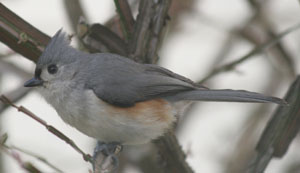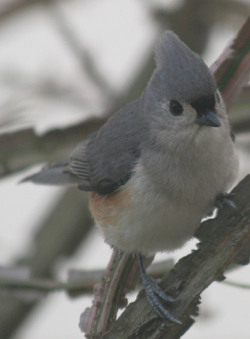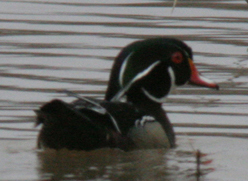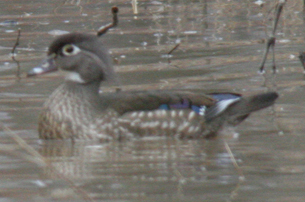Double-crested Cormorant
General:
The Double-crested Cormorant is the most numerous and widespread North American cormorant. It can occur in large numbers inland as well as on the coast.
In upstate New York this cormorant has increased in numbers. Twenty years ago it was an infrequent site, nowDouble-crested Cormorant – Phalacrocorax auritus large colonies on the Great Lakes and large inland lakes has led to the concern about their predation on sport fish.
When on the water their bodies, as shown in the picture, are almost entirely submerged. When out of the water and perching they often spread their wings to dry.
The Double-crested Cormorant makes a bulky nest of sticks and other materials. In breeding colonies where the nests are placed on the ground, young cormorants leave their nests and congregate into groups.
The Double-crested cormorant egg is chalky blue. The chicks will hatch in 25-29 days and will fledge in 35-42 days
Identification:
Double-crested Cormorant – Adult Description: They are large, dark bodied water birds – approximately 30″ to 35″. They have a long body and long neck. Double-crested Cormorant has a medium-sized bill hooked at tip. The throat pouch area is orange, extending straight down 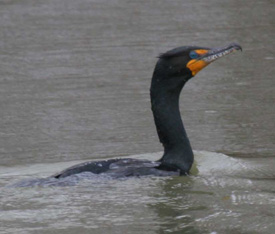 across throat. It does have tufts on the top of its head – although not always evident.
across throat. It does have tufts on the top of its head – although not always evident.
Immature Description – Upper breast and throat pale. Chest variable from nearly whitish to dusky.
Habitat: Found in diverse aquatic habitats, such as ponds, lakes, rivers, lagoons, estuaries, and open coastline; more widespread in winter – always open water.
Territory:
The Double-crested Cormorant breeds from Alaska to Newfoundland down to Mexico. It winters as far north as Long Island, NY and Southern Alaska.
Food:
Predominantly fish. Also some other aquatic animals, insects, and amphibians. The Double-crested cormorant is a Diving water bird. It chases prey underwater grabbing prey in its bill.
Credits:
Patuxent Bird Identification Info Center
The Audubon Society – Field Guide to North American Birds (Eastern Region)
Wikipedia, the free encyclopedia
Cornell Lab of Ornithology
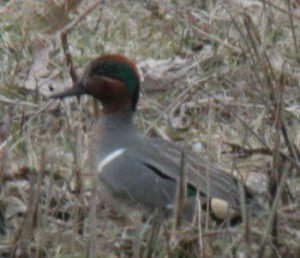 Iridescent green face patch sweeping through eye and tapering to the back of head. Chest is buff with dark spotting. The flanks are gray and back Vertical white line at fore part of flanks. Horizontal black line above flanks, buff outer under-tail coverts bordered by black. The central under-tail coverts are black.
Iridescent green face patch sweeping through eye and tapering to the back of head. Chest is buff with dark spotting. The flanks are gray and back Vertical white line at fore part of flanks. Horizontal black line above flanks, buff outer under-tail coverts bordered by black. The central under-tail coverts are black.